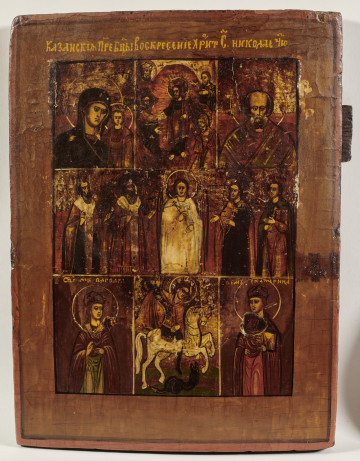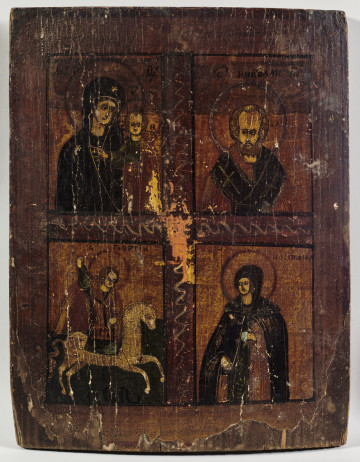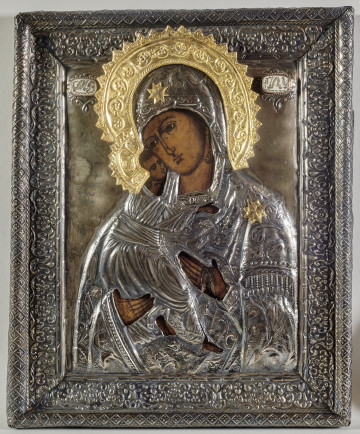
A multi-field icon, the Mother of God Odigitria of Kazan; the Resurrection of Christ; St. Nicholas, Archangel with saints; St. Barbara; St. George the Martyr, St. Catherine
2nd half of the 19th century
Castle Museum in Łańcut
Part of the collection: Artistic glass
A small saucer made of hyalith. The Wilanów collection also includes a cup that comes in a set with the saucer (Wil.5698/1).
It owes its exceptional appearance mainly to the material it is made of, i.e. black, non-transparent glass. Its inventor was Georg Franz August Longueval, count of Buquoy (1781–1851). He was a mathematician, a physicist, a chemists, a philosopher as well as an owner of several glass factories. In the course of his experiments he discovered a new recipe for deep black glass. He gave it the name of “hyalith”, inspired by the Greek word for “glass” (“hyalos”). Its production started in 1817 and it quickly became very popular. It resembles lacquer, so it was often decorated with gilded chinoiserie motifs inspired by Far Eastern art, which made it even more similar to materials coated with lacquer. These motifs included figures in Oriental attire, plants such as peonies or chrysanthemums, architectural structures evoking the Far East as well as animals such as cranes or mythical dragons. That is the style in which the saucer was decorated. Unfortunately, the subtle gilding faded over the course of time and it was later coated with a painted brown pattern which is far below the artistry of the original motif. The saucer is decorated with depictions of lush vegetation (spikes, flowers, grass) and a small pagoda.
Author / creator
Dimensions
entire object: height: 3,5 cm, width: 15,0 cm
Owner
Museum of King Jan III's Palace at Wilanów
Identification number
Location / status

2nd half of the 19th century
Castle Museum in Łańcut

XIX/XX wiek
Castle Museum in Łańcut

początek XX w.
Castle Museum in Łańcut
DISCOVER this TOPIC
National Museum in Szczecin
DISCOVER this PATH
Educational path